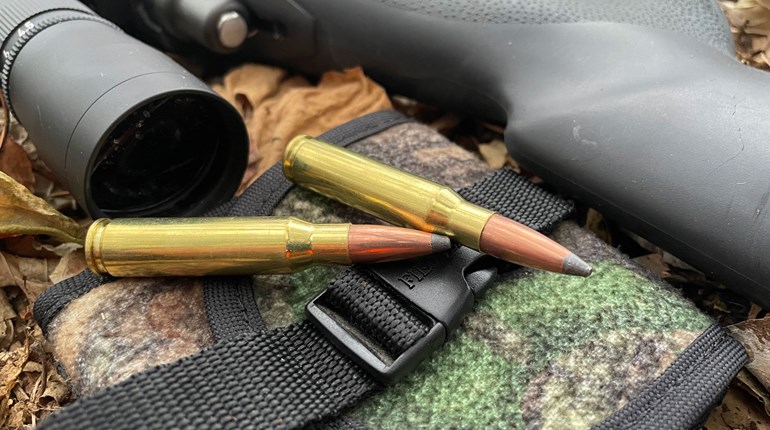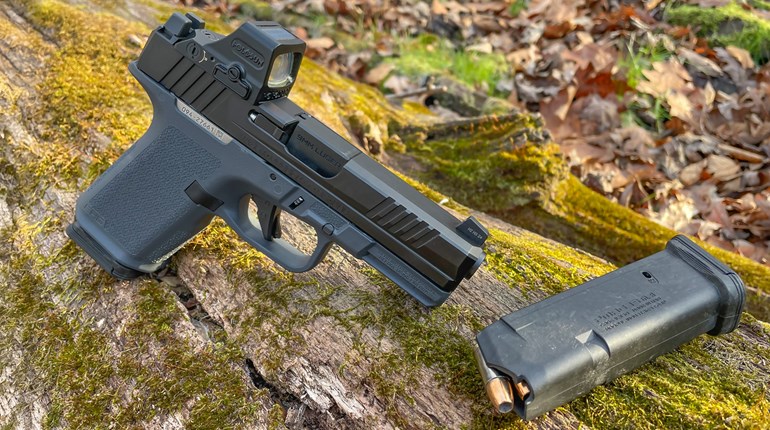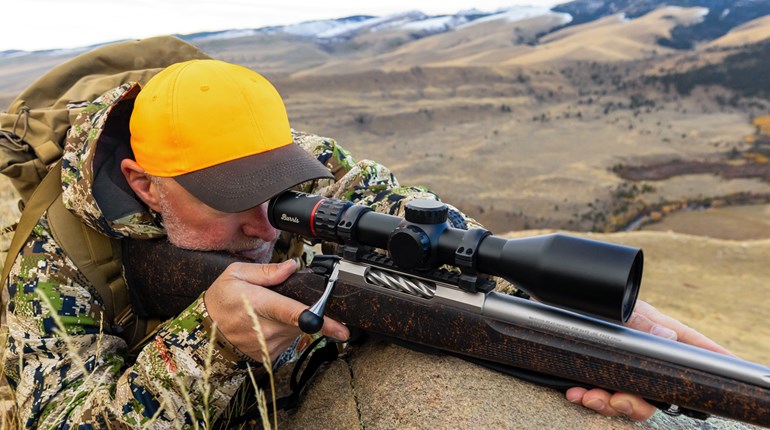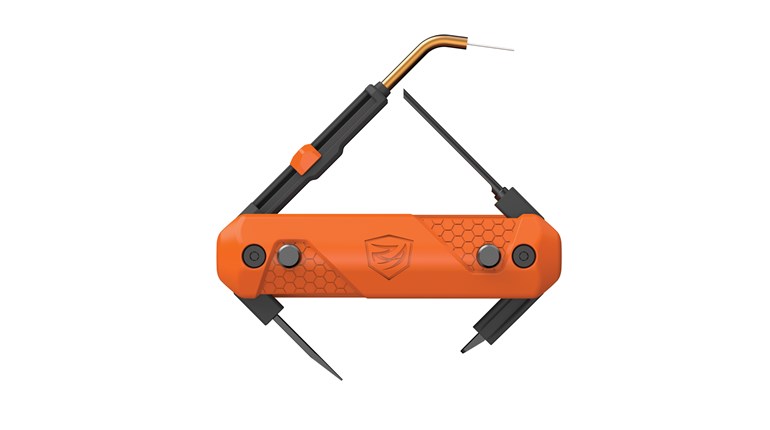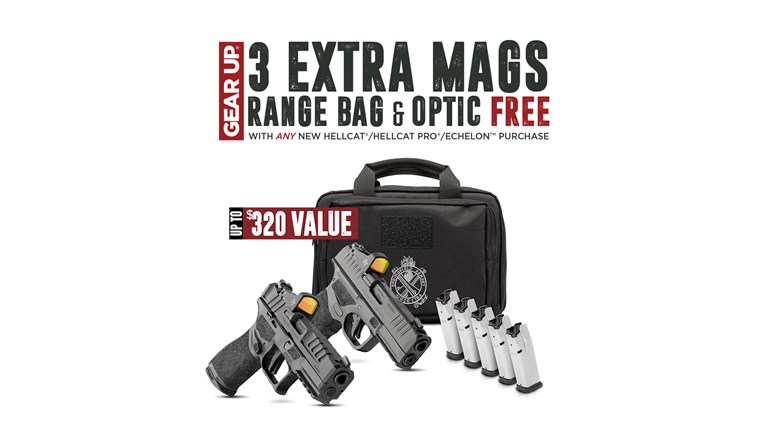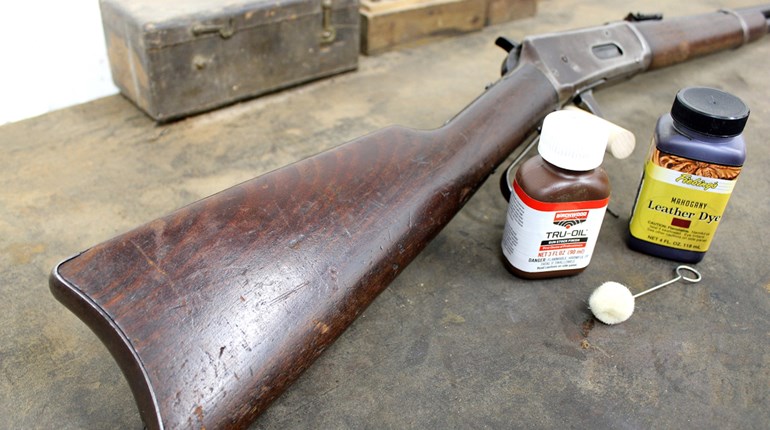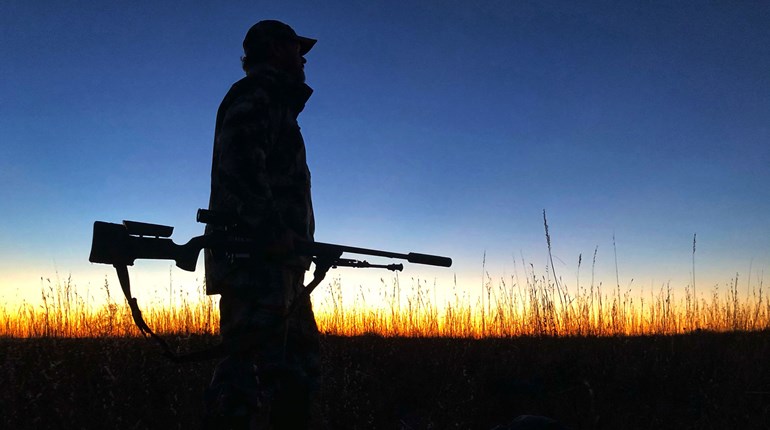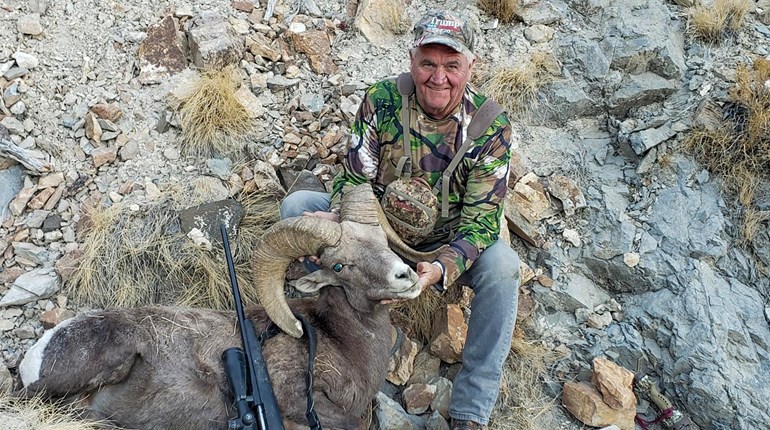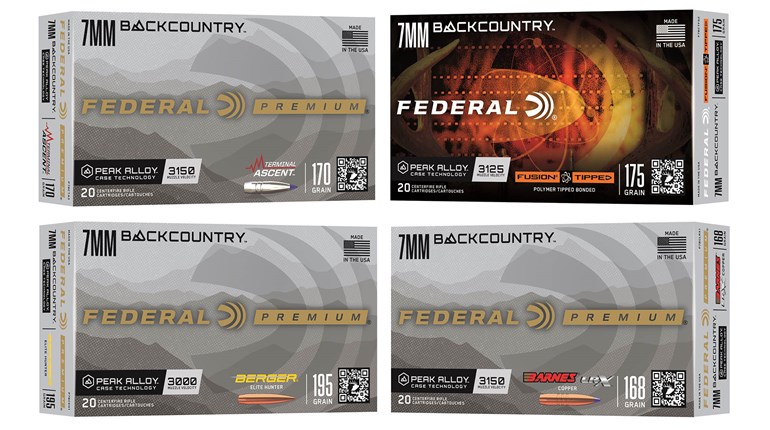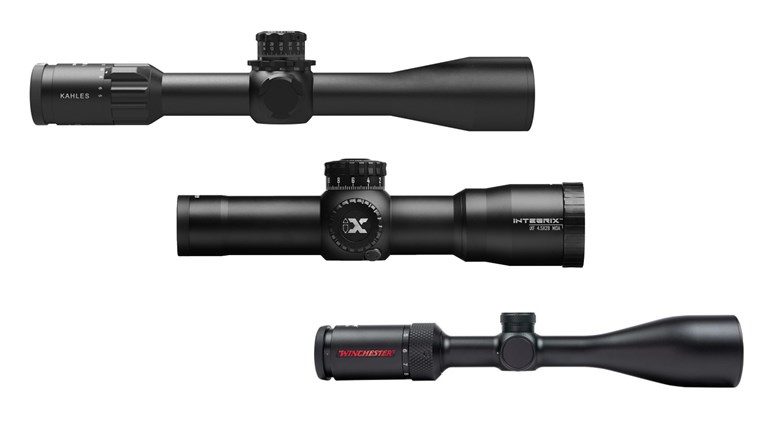
It seems like yesterday. After finishing my shift at a regional chain grocery store and, with no college work to be done that evening, I began my long, rushed, circuitous journey through four counties—including across a noteworthy mountain range—to reach two firearm dealers. The route wasn’t hastily planned; the store in my home county closed hours before the one “across the mountains” did, though the two were separated by more than an hour’s drive. Still, I was game. After completing the requisite Firearms Transaction Record, ATF Form 4473, I quickly secured the necessary approval from the National Instant Criminal Background Check System (NICS), and paid, permitting me to take possession of the first firearm I’d purchased, a Ruger 77/22 in .22 Hornet.
With the time to close fast approaching, I skidded into the gravel parking lot of the second business. Expecting me, the owner had my rifles of choice set aside and the same forms ready to complete. Again, the approval came swiftly and I walked out the door with a stainless steel Remington Model 700 BDL DM in .300 Wby. Mag., and a bull-barrel Remington Model 700 Sendero in 7mm STW. Happy 18th birthday!
All three are long gone. The Ruger 77/22 was purchased from me by a relative, while the 7mm STW-chambered Remington Model 700 was—stupidly, I must add—traded toward a different rifle. The last of the trio would accompany me to the far reaches of the United States, including unique places such as Montague Island, Alaska, Walden, Colo., and Broadus, Mont., among other locations. In addition to antelope and elk, untold numbers of Virginia whitetails and varmints fell to the beloved .300—in my hands and those of friends and relatives who were unafraid of its abusive recoil. In fact, it was shot so much on the range and in the field that the barrel eventually needed replacing. I did, but chambered it in a different chambering. That initial love was lost and we parted ways. I can only imagine where that long-barreled .375 H&H Mag. is now.
While my Model 700 faithfully served me for many years, during that same time more trophy-class bucks were missed—or opportunities were lost—due to a persnickety, inaccurate and ultimately unreliable, sidelock-equipped muzzleloader than I ever killed with my .300. Why? Virginia’s muzzleloader season often coincides with peak rut, or very close to it. Even now, my best bucks rarely are taken outside of that two-week period. With my 44th birthday taking place just days ago, I still question my choice(s) for a first rifle. Perhaps I’d been better served with a muzzleloader, and it’s likely the same applies to you, too.

Background, Ballistics & More
The inline muzzleloader can be attributed to the genius and foresight of Tony Knight, who founded Knight Rifles in the mid-1980s in his workshop in Putnam County, Mo. Debuting in 1985, the MK-85 (purportedly named after his daughter’s initials) forever changed perceptions about the ease of use, accuracy, reliability and ballistics of muzzleloaders. The in-line design—as its name suggests—eliminated the troublesome, dog-legged route sparks (and heat) of percussion cap-ignited sidelocks, and paired premium components with quality, saboted projectiles. These improvements—not to mention the ability to easily add an optic—greatly improved accuracy. Names such as Timney Triggers and Green Mountain Rifle Barrel Co., Inc. are top-tier brands even today. So in-demand were his game-changing muzzleloaders that Knight had quickly outgrown his garage and self-contained business. He would eventually build a large facility in Centerville, Iowa, which is where the company resided until well after he sold it.

Knight’s success with the MK-85 ignited a trend that continues even today with its latest owners and most ardent competitors; that is, eek out every bit of performance from what is, frankly, an antiquated firearm type. However, despite being archaic with regard to loading, modern muzzleloaders are remarkably accurate; in fact, when the ideal load—projectile and powder type/charge—is identified, smokepoles can rival, if not exceed, the accuracy potential of rifles firing metallic cartridges. Need proof? After only minimal experimentation with the propellant charge—in this case, Blackhorn 209—my decade-old-plus CVA Accura MR recently put three, 270-gr., 0.498-inch-wide Federal Premium Trophy Copper bullets into 0.684-inches at 100 yards from a sandbag rest. Best of all, travelling at 1,716 fps, the bullet generates 1,765 ft.-lbs. of energy at the muzzle. Can big-bore cartridge rifles improve upon that? Maybe. But what does it matter; what big-game animal cannot be taken with it at typical hunting distances? Few.

Outside of grain or hay fields or the odd powerline, hunting in the Piedmont region of Virginia seldom affords shots at quarry beyond 200 yards, and in many cases, less than half that. The mountainous western areas of the state also adhere to the latter. The muzzleloader is perfect for those ranges, regardless of where you’re hunting; in fact, despite using mild powder charges in my .50-cal. Knight Wolverine 209 and .52-caliber Bighorn, also a Knight, I’ve easily killed deer at distances out to 225 yards, though I prefer closer. Some specialty models, such as the Knight LRM-Peregrine and CVA Paramount (and Pro V2 model) are capable of 300-yard-plus shots. The former can hit 3,000 fps, and it’s guaranteed to produce MOA groups out to 500 yards. Doesn’t sound like an outdated long gun, does it? But such performance is only the beginning of why you should opt for a frontstuffer. Here are others.
Forms? None Needed.
State laws differ greatly, so consult with the appropriate legislation and authority before making a purchase. Here in Virginia, though, I can saunter into a retail operation, select my muzzleloader, swipe the plastic, and stroll back to my truck in little more than the time it takes to process my purchase, or have it shipped directly to my door. There is no ATF Form 4473, nor time and money wasted on a background check—nothing. Instead, I can top it with an optic—if I so choose—and head to the range to prepare it for the field. Efficiency at its best.

Cost vs. Versatility
Many states have muzzleloader-only seasons or units/lands, and the smokepole can pull double-duty during the general firearms season as well. As is the case in the Midwest and suburbia, only shotguns and muzzleloaders can be used, though the allowance of straight-walled metallic cartridges is rapidly changing that. Muzzleloaders are quickly falling from favor, despite their added advantages and versatility.
As with modern firearms, muzzleloaders, which are considered “antique firearms,” vary greatly in price. For instance, the CVA Wolf V2, which is a minimalist inline muzzleloader that will faithfully serve for years, starts at $285, and yet the company also has the abovementioned Paramount Pro V2 for upward of $2,065. Knight has changed ownership multiple times during the recent decades, but the tradition of producing 100-percent, American-made muzzleloaders true to Tony Knight’s vision continues today; in fact, parts for a new stock fit those from yesteryear. I own several Knights, but only the .52-caliber Bighorn was new. The rest were well-maintained originals. Knight also offers a host of options, ranging from the Mountaineer ($1,700) to the Peregrine ($2,652). Traditions Performance Firearms likely has the most diverse lineup, with the least costly model being the $270 Buckstalker XT.
Before perusing the options, ensure that you’ve consulted the regulations for where you intend to hunt. As an example, when hunting in the Northwestern U.S. your muzzleloader must be equipped with (and absent of) certain items. These generally focus on breech plug design, ignition type and sighting. Projectile design is also often restricted in some states, though that’s outside the scope of this article.

Ease of Use
The leading arguments against using muzzleloaders are: smoke (hard to detect a hit and the direction the animal travelled afterward); unpleasant smell (with blackpowder and some substitutes); required cleaning after firing (especially with blackpowder and earlier substitutes); slow loading process and being limited to a single shot (within a reasonable time). Some modern rifles, such as the Ruger No. 1 and CVA Scout, to name two, are single-shots, too, so that’s a moot point, and newer blackpowder alternatives are far cleaner and less hostile to the nose than previous options. In fact, Blackhorn 209 has minimal smoke, no nasty smell, cleans up easily, and doesn’t require immediate attention after firing—all while offering significant gains in velocity. Other newer, user-friendly options include: Hodgdon Triple-Seven; Triple-Seven Magnum; IMR White Hots; and Alliant Blue MZ, among others. Stalwarts include Pyrodex Select, RS and P, as well as authentic blackpowder. Though more of a hassle to clean, I still use the latter due to accuracy, reliability, and cost. My biggest muzzleloader buck to-date was taken last year using 80 gr./vol. of Goex FFg blackpowder beneath a Barnes 245-grain Spitfire bullet with sabot.

Although I most frequently use loose powder, pelletized versions of the powders ease and quicken the loading process, as there is no chance of spillage; pellets are premeasured. Pairing said pellets with Hornady’s SST-ML Speed Sabot, which has a tail that holds the unitized powder in place, further hastens the process.
The newest concept in muzzleloading is Federal FireSticks (Editor's Note: a form 4473 is required to purchase firearms designed to use a Federal FireStick). A premeasured charge of Hodgdon Triple-Eight powder is contained in a plastic capsule—think cartridge case—that is inserted into the breech after the projectile has been seated via the muzzle. The 209 shotshell primer is secured at the rear of the capsule. The advantage of the design is that, at the end of the hunt, the case can be removed, thereby rendering the rifle fully safe without firing. The design is also impervious to the elements. Smart. Currently, the three muzzleloaders equipped to handle FireSticks are the Traditions NitroFire, Traditions NitroBolt and the CVA Crossfire.

Bullets
Muzzleloader hunters are blessed in innumerable projectile options. These range from simple handgun and rifle bullets contained within a plastic sabot to full-diameter, skirted or skirtless projectiles. Some are all-lead, while others are leadless; many mix the metals and yet others have an attractive, pointed plastic tip. Options abound. Outside of shotguns, no firearm design remotely offers the multitude of projectile options of muzzleloaders—and that’s what great about them.
Want cheap fun? Get a box of inexpensive, component handgun bullets and the appropriate sabots to accommodate in your gun and you’ll have many hours of entertainment. As an example, in .50 caliber, Harvester has sabots to accommodate 0.400-, 0.429/0.430-, 0.451/0.452-, and 0.458-inch bullets. The latter are projectiles common to the .45-70 Government, .450 Marlin and .458 SOCOM, and thus are more costly. As long as they’re of sufficient construction, they can work well on big-game animals, too. The Hornady XTP is a favorite for this reason.
Should you desire—or need—a change to a projectile designed specifically for muzzleloaders, it’s likely little adjustment will need to be made to your optic, though finding the perfect propellant type/charge and bullet combination can take time and patience. An image accompanying this article shows the difference between three-shot groups fired using 80 gr./vol. of Blackhorn 209 (background) and 100 gr./vol. (foreground). The dissimilarity is marked. I’ve used most muzzleloader bullets on the market today, as well as in the past, and all have strengths and weaknesses—if only cost. You will find one that meets your needs with regard to price, ease of loading, accuracy and ballistics, both external and terminal. Best of all, even if there’s another “ammo shortage,” it’s doubtful that it’ll affect your time on the range. There’s always a bullet that will work.

Cleaning
Depending on your powder choice, things can get messy and smelly quickly. For the first-time muzzleloader hunter, I’d avoid genuine blackpowder; your friends and significant other aren’t likely to appreciate the odor, and if you’re unable to rid the muzzleloader of the corrosive residue, rust (and pitting of the barrel) is guaranteed in short order. Save it for down the road, if ever. I like it, but most hunters nowadays don’t.
Regardless of your powder choice, cleaning is a must; a fired muzzleloader cannot simply be placed in the safe or cabinet and forgotten. Depending on the configuration, expect to pull the breech plug (and nipple, if present) at a minimum, though some, such as Knights, require further disassembly. If you purchase a muzzleloader, get an ultrasonic cleaner, too. You’ll thank me later. It’ll clean the parts in a few minutes’ time—no scrubbing necessary on the small parts. Also invest in the proper cleaning liquids (Blackhorn 209 requires a non-water-based solvent), patches, and anti-seize grease, as well as a quality range rod. With modern muzzleloaders and powders, cleaning is fast and frustration free.
It's my hope that, after reading this article and before reaching for your wallet for your first rifle, you at least consider a muzzleloader. I wish I did, as it’d have better served me through the years. You’re liable to reach the same conclusion.













